Ulaanbaatar, the bustling capital of Mongolia, is a city where tradition meets modernity in the most fascinating ways. Nestled between rolling steppes and rugged mountains, this dynamic metropolis offers an intriguing mix of history, culture, and adventure. For travelers looking to explore Mongolia’s heart, an Ulaanbaatar itinerary is essential to experience the best this city has to offer.
Unlike other capitals, Ulaanbaatar is more than just a gateway to Mongolia’s vast wilderness—it’s a destination in its own right. Here, you’ll find ancient Buddhist monasteries standing alongside Soviet-era architecture and gleaming skyscrapers. Bustling markets sell traditional Mongolian crafts, while gourmet restaurants serve modern takes on nomadic cuisine. And just beyond the city, vast grasslands and sacred mountains await those eager to explore Mongolia’s raw beauty.
This detailed Ulaanbaatar itinerary will guide you through the city’s top attractions, must-visit cultural spots, and hidden gems. Whether you're spending a day or a week, this itinerary will ensure that you make the most of your time in Mongolia’s capital.
This Ulaanbaatar itinerary includes the best things to do in Ulaanbaatar, from interesting museums to famous Sükhbaatar Square, and from beautiful Buddhist temples to a whirling cultural show.
Things to do in Ulaanbaatar
Table of contents
- Things to do in Ulaanbaatar
- Map of Ulaanbaatar attractions and highlights
- What to do in Ulaanbaatar
- Top 3 hotels in Ulaanbaatar
- Important Things to Know When Planning a Trip to Mongolia
- The Best Places to Visit in Ulaanbaatar (and Around)
- Best Day Trips from Ulaanbaatar
- Ulaanbaatar Itinerary
- Day 1: Discovering the Historic and Cultural Heart of Ulaanbaatar
- Day 2: Exploring Ulaanbaatar’s Nature and Soviet Heritage
- Day 3: A Day Trip to Terelj National Park and Genghis Khan Statue Complex
- Conclusion
Disclosure: Some links in this post are affiliate links. If you make a purchase through one of these links, we may earn a small commission (at no extra cost to you!). We're very grateful when you use our links to make a purchase:-).
Map of Ulaanbaatar attractions and highlights

What to do in Ulaanbaatar
- Visit the beautiful Gandan Khiid Monastery
- Learn about the history of Mongolia at the National Museum
- Admire the view from Zaisan Memorial
- Watch a Tumen Ekh Cultural Show
- Walk around Sukhbaatar Square
- Explore the quirky Puzzle Museum
- Enjoy delicious food at Luna Blanca
- Day trip to Terejl National Park
- Day trip to Khustai National Park
- Day trip to Bogd Khan Mountain
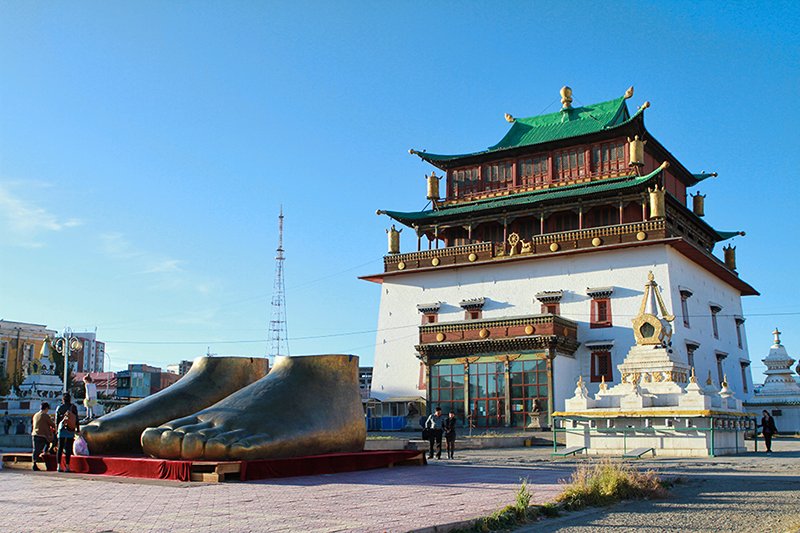
Top 3 hotels in Ulaanbaatar
Find the best hotel deals for your next trip! Compare prices and book your stay on
Hostelworld: Meet fellow travellers — save on stays, Backpacker-friendly hostels, verified reviews and social stays that fit your budget and vibe.
Tripadvisor: Plan with confidence — reviews you can trust, Restaurants, hotels and experiences with millions of traveller reviews to help you choose what’s best.
Traveloka: Flights, hotels & more — simple booking, One-stop travel platform for great flight fares, hotel deals and local activities across Asia and beyond.
Important Things to Know When Planning a Trip to Mongolia
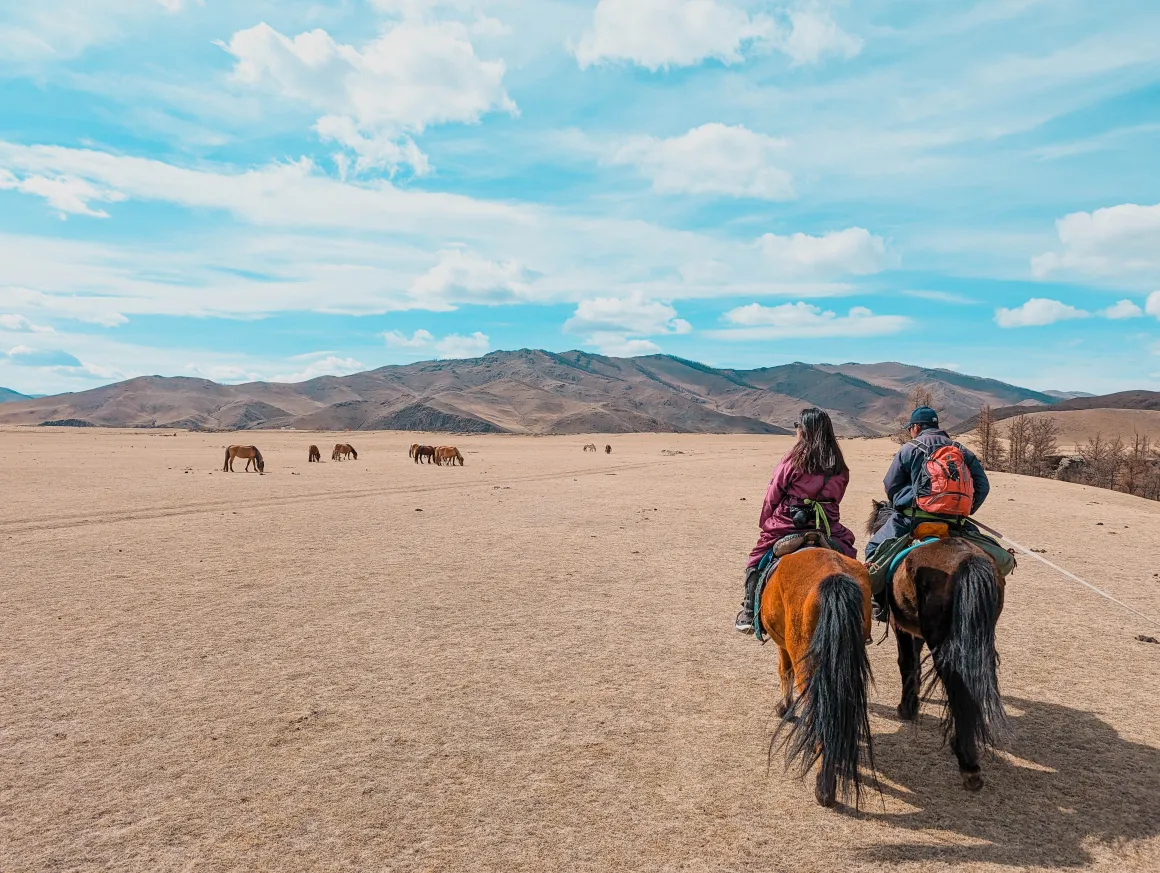
Mongolia is a vast and breathtaking destination with unique cultural experiences and stunning natural landscapes. Here are some key things to consider when planning your trip:
1. Best Time to Visit
Mongolia has extreme weather conditions, with cold winters and short but pleasant summers. The best time to visit is between June and September, when temperatures are mild, and major festivals like Naadam take place.
2. Visa and Entry Requirements
Most travelers require a visa to enter Mongolia, which can be obtained from a Mongolian embassy or consulate. Some nationalities are eligible for visa-free entry. Ensure you check the latest visa policies before traveling.
3. Transportation and Getting Around
- Flights: Ulaanbaatar’s Chinggis Khaan International Airport is the main gateway.
- Public Transport: Limited outside the capital; buses and taxis are available within Ulaanbaatar.
- Car Rentals: Renting a 4x4 with a driver is the best way to explore the countryside, as roads can be rough and poorly marked.
- Train: The Trans-Mongolian Railway connects Mongolia to Russia and China.
4. Accommodation Options
While Ulaanbaatar offers luxury hotels and guesthouses, rural areas primarily have traditional ger camps. Booking in advance is recommended, especially during peak travel seasons.
5. Culture and Etiquette
- Mongolians are known for their hospitality; it’s customary to accept offerings like tea or snacks.
- Avoid stepping on thresholds when entering a ger.
- Pointing with a finger is considered impolite; use your whole hand instead.
6. Food and Dietary Considerations
Mongolian cuisine is meat-heavy, featuring mutton, beef, and dairy products. Vegetarians may have limited options outside of Ulaanbaatar, so packing some snacks is advisable.
7. Health and Safety
- Carry necessary medications and a basic first aid kit, as medical facilities are scarce in remote areas.
- Tap water is not always safe to drink; opt for bottled or boiled water.
- Be prepared for altitude sickness if traveling to higher elevations.
8. Packing Essentials
- Warm clothing, even in summer, as temperatures drop at night.
- Sunscreen, sunglasses, and a hat for protection from the strong sun.
- A sturdy pair of hiking boots if you plan to explore the outdoors.
9. Festivals and Events
The Naadam Festival (July) is Mongolia’s most famous event, featuring horse racing, wrestling, and archery. Tsagaan Sar (Lunar New Year) is another significant celebration filled with traditional customs.
Looking for cheap flights or all-in-one travel deals? Check out:
Trip.com (Competitive flight & hotel bundles)
Expedia (Flight + hotel savings)
WayAway.io (Cashback on flights & travel bookings)
10. Connectivity and Communication
Wi-Fi is available in Ulaanbaatar hotels and cafes, but coverage is sparse in rural areas. Consider getting a local SIM card with data for better connectivity.
By keeping these important factors in mind, you can ensure a smooth and unforgettable adventure in Mongolia!
The Best Places to Visit in Ulaanbaatar (and Around)

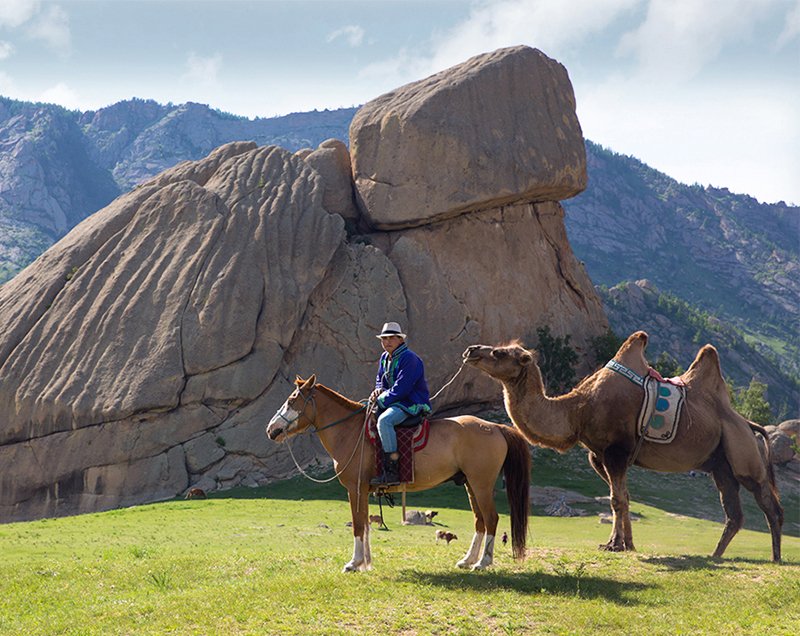
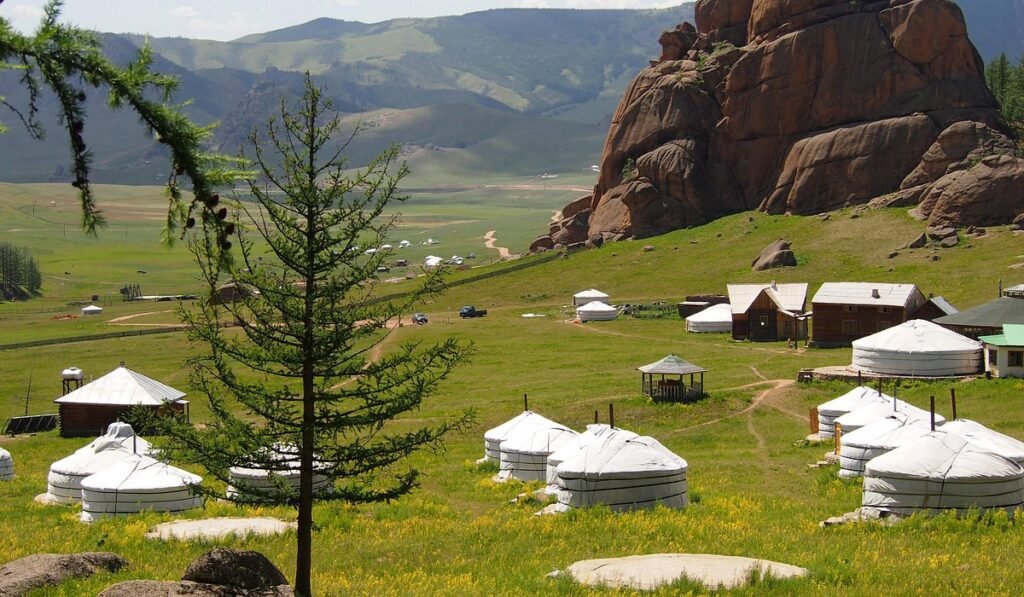
Ulaanbaatar, the capital of Mongolia, is a city that blends modernity with rich cultural and historical heritage. Here are the must-visit places in Ulaanbaatar and its surroundings:
1. Sukhbaatar Square
Located in the heart of the city, Sukhbaatar Square is a central landmark featuring a grand statue of Genghis Khan. It’s an ideal starting point for exploring the city and learning about Mongolia’s history.
2. Gandantegchinlen Monastery
One of the most significant Buddhist monasteries in Mongolia, the Gandantegchinlen Monastery is home to a stunning 26-meter-tall statue of Avalokiteshvara. Visitors can witness monks in prayer and experience the peaceful ambiance.
3. National Museum of Mongolia
For those interested in Mongolian history and culture, the National Museum offers exhibits covering everything from prehistoric artifacts to modern history, including displays of traditional clothing and nomadic lifestyles.
4. Bogd Khan Palace Museum
The former winter residence of Mongolia’s last king, the Bogd Khan Palace Museum showcases intricate architecture, rare artifacts, and Buddhist relics. It’s a fascinating glimpse into Mongolia’s royal past.
5. Zaisan Memorial
Perched on a hill south of the city, the Zaisan Memorial honors Soviet-Mongolian friendship and provides stunning panoramic views of Ulaanbaatar. Climbing the steps to the top is a rewarding experience.
6. Gorkhi-Terelj National Park
Located about 55 km from Ulaanbaatar, this national park offers breathtaking landscapes, rock formations, and outdoor activities such as hiking, horseback riding, and visiting the famous Turtle Rock and Aryabal Meditation Temple.
7. Chinggis Khaan Statue Complex
A short drive from the city, this massive 40-meter stainless steel statue of Genghis Khan is one of Mongolia’s most iconic landmarks. Visitors can climb to the top for an incredible view and explore the museum inside.
8. Hustai National Park
Famous for being home to the wild Przewalski’s horses (Takhi), Hustai National Park offers wildlife spotting, trekking, and an opportunity to experience Mongolia’s diverse ecosystems.
9. The Black Market (Naran Tuul Market)
For a truly local shopping experience, visit the bustling Naran Tuul Market. It’s the best place to find traditional clothing, souvenirs, and affordable goods, but visitors should be mindful of pickpockets.
10. Choijin Lama Temple Museum
A beautifully preserved Buddhist temple-turned-museum, Choijin Lama Temple offers intricate architecture, Buddhist artworks, and a serene atmosphere in the midst of the city’s hustle and bustle.
Whether you're exploring the vibrant city of Ulaanbaatar or venturing into Mongolia’s stunning natural landscapes, these destinations promise an unforgettable experience.
Book top-rated tours and attractions on :
Viator (Best for curated global tours)
GetYourGuide (Skip-the-line tickets & local guides)
Klook (Great for Asia adventures & discounts)
Best Day Trips from Ulaanbaatar
If you have extra time, consider taking a day trip to explore Mongolia’s natural beauty and historical sites beyond the city:
1. Gorkhi-Terelj National Park
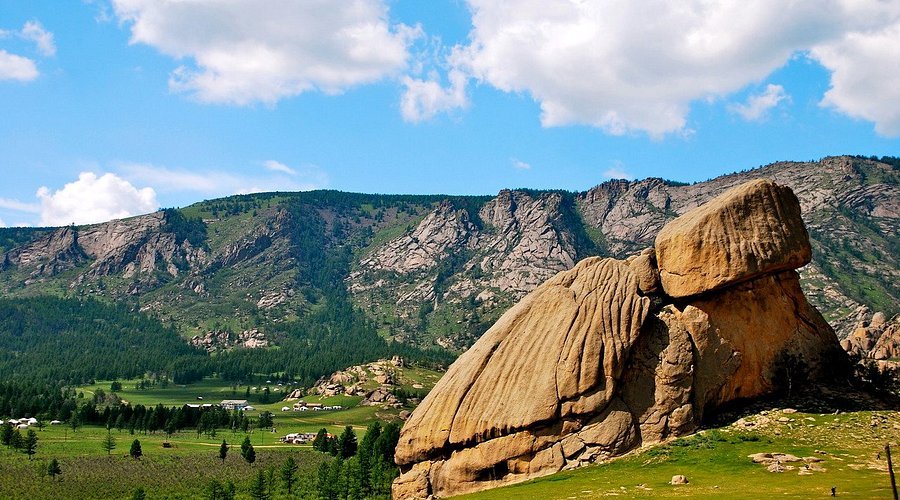
Located about 55 km from Ulaanbaatar, this national park offers breathtaking landscapes, rock formations, and outdoor activities. It is one of Mongolia’s most accessible and picturesque national parks, making it a favorite for both locals and tourists.
Top Attractions:
- Turtle Rock (Melkhii Khad): A unique rock formation resembling a turtle, perfect for photos and light climbing.
- Aryabal Meditation Temple: A serene Buddhist temple perched on a hill with stunning panoramic views and a peaceful ambiance for meditation.
- Tuul River: Ideal for picnicking and light water activities like kayaking and rafting.
- Yurt (Ger) Camps: Visitors can stay in traditional Mongolian gers, experiencing the nomadic lifestyle firsthand.
Activities:
- Hiking & Trekking: Numerous trails offer stunning views of mountains, valleys, and rivers.
- Horseback Riding: A traditional and scenic way to explore the park’s vast landscapes.
- Camel Riding: Available in some areas, offering a unique desert-like experience.
- Rock Climbing: Popular among adventure enthusiasts due to the park’s unique rock formations.
- Wildlife Watching: The park is home to diverse wildlife, including eagles, ibex, and marmots.
Gorkhi-Terelj National Park is an ideal destination for those looking to experience Mongolia’s natural beauty without venturing too far from Ulaanbaatar. Located about 55 km from Ulaanbaatar, this national park offers breathtaking landscapes, rock formations, and outdoor activities such as hiking, horseback riding, and visiting the famous Turtle Rock and Aryabal Meditation Temple.
Book top-rated tours and attractions on :
Viator (Best for curated global tours)
GetYourGuide (Skip-the-line tickets & local guides)
Klook (Great for Asia adventures & discounts)
2. Chinggis Khaan Statue Complex
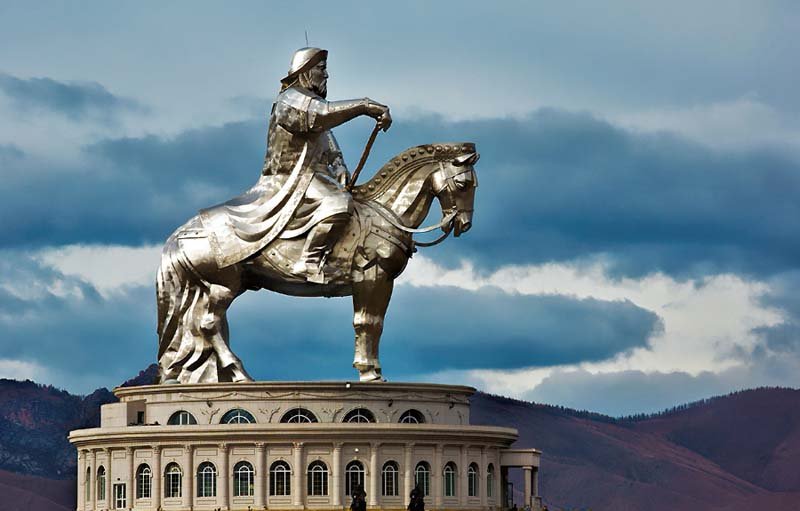
The Chinggis Khaan Statue Complex is a must-visit landmark in Mongolia, located about 54 kilometers (33 miles) east of Ulaanbaatar, in the Tsonjin Boldog area. This massive equestrian statue stands at 40 meters (131 feet) tall, making it the largest of its kind in the world. The statue is a tribute to Genghis Khan, Mongolia's most famous historical figure, who united the Mongol tribes and founded the Mongol Empire in the 13th century.
Key features:
- Statue: The statue itself is made of stainless steel and depicts Genghis Khan on horseback, holding a golden whip. It faces the direction where it is believed he discovered a golden whip, which led to his rise to power.
- Museum: Beneath the statue is a museum showcasing the history of Genghis Khan and the Mongol Empire. It contains artifacts, historical documents, and exhibits about the Mongolian nomadic lifestyle.
- Sky Deck: Visitors can take an elevator to the top of the statue for panoramic views of the surrounding steppe and the complex itself. It's a great spot for photography, offering a unique vantage point of the statue.
- Genghis Khan's Hand: There’s a replica of Genghis Khan's hand, where visitors can touch it for good luck, and a cultural experience of Mongolian tradition and history.
- The Complex: The statue is part of a larger cultural center that includes a ger (traditional Mongolian yurt) and various other architectural features that give insight into Mongolia's heritage.
The Chinggis Khaan Statue Complex is not only a stunning sight for those interested in Mongolian history but also a symbol of national pride and the legacy of Genghis Khan.
3. Hustai National Park
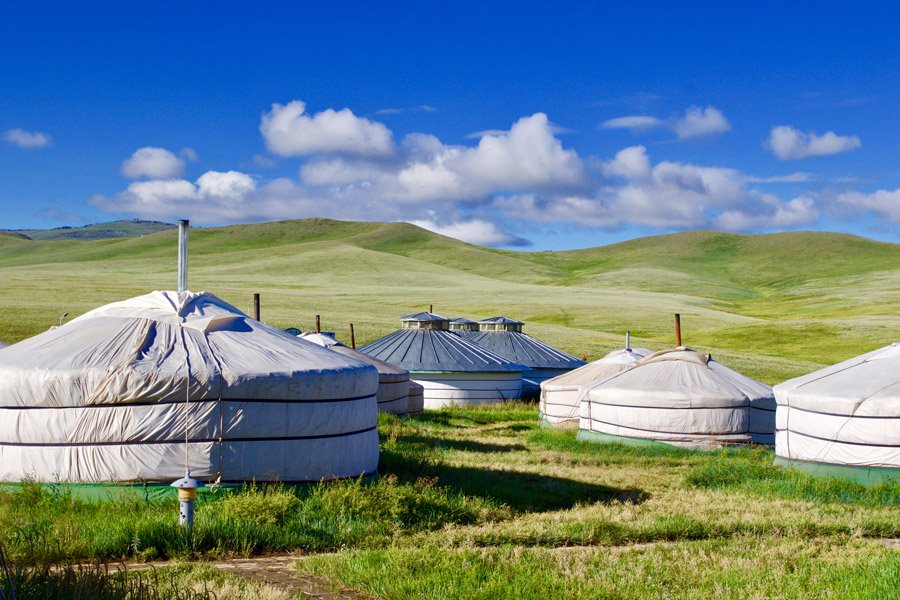
Hustai National Park is one of Mongolia's most famous protected areas, located about 95 kilometers (59 miles) west of Ulaanbaatar. It covers an area of around 50,000 hectares and is renowned for its vast steppes, rich biodiversity, and conservation efforts. The park is best known for being the home of the Przewalski's horse, a wild horse species that was once thought to be extinct in the wild but has been successfully reintroduced here.
Top Attractions & Activities at Hustai National Park:
- Przewalski's Horse (Takhi):
- Main Attraction: The park is home to one of the world's most significant conservation efforts for the Przewalski's horse. Visitors can spot these rare wild horses grazing in the park's open steppe, providing a chance to see a species that has been reintroduced after disappearing from the wild in the 20th century.
- Wildlife Watching:
- Mongolian Wildlife: Aside from Przewalski's horses, the park is rich in wildlife, including species like Mongolian gazelles, red deer, wolves, and foxes. Birdwatchers can also spot a variety of species, such as steppe eagles and golden eagles.
- Traditional Mongolian Gers (Yurts):
- Experience Mongolian Culture: Visitors can stay in traditional Mongolian gers, offering an authentic experience of nomadic life. You can try traditional Mongolian meals and enjoy the serene atmosphere of the park.
- Hiking & Nature Walks:
- Exploring the Steppe: The park has several trails for hiking and walking, ranging from easy strolls to more challenging hikes. The trails offer great opportunities to spot wildlife, take photos of the stunning landscape, and experience Mongolia's open steppe firsthand.
- Horseback Riding:
- Mongolian Riding Experience: Horseback riding is one of the best ways to explore the park. You can ride through the vast grasslands and potentially see Przewalski’s horses and other wildlife up close.
- Gorkhi-Terelj National Park:
- Nearby Attraction: Hustai is not far from the Gorkhi-Terelj National Park, another popular park in Mongolia. While Gorkhi-Terelj is famous for its rock formations, hiking, and Buddhist temples, combining a visit to both parks can make for a fantastic adventure, especially if you are interested in Mongolia’s natural beauty and wildlife.
- Cultural and Educational Experiences:
- Interpretive Centers: The park has visitor centers and information areas that provide insights into the conservation of the Przewalski's horse and other local wildlife. Educational programs and talks on the park’s ecosystem and Mongolian history can also enhance the visit.
- Camping:
- Stay Under the Stars: For those who enjoy outdoor activities, camping in the park is a memorable way to experience the wilderness. Stargazing at night is spectacular due to the park's remote location, far from city lights.
Best Time to Visit:
- The ideal time to visit Hustai National Park is during the summer months (June to September) when the weather is warm, and wildlife is most active. However, it’s worth noting that temperatures can drop sharply in the evenings, so bringing warm clothing is advisable.
Whether you’re an avid wildlife enthusiast, a nature lover, or someone interested in Mongolian culture, Hustai National Park offers an unforgettable experience with its blend of natural beauty, wildlife, and traditional life.
4. Manzushir Monastery
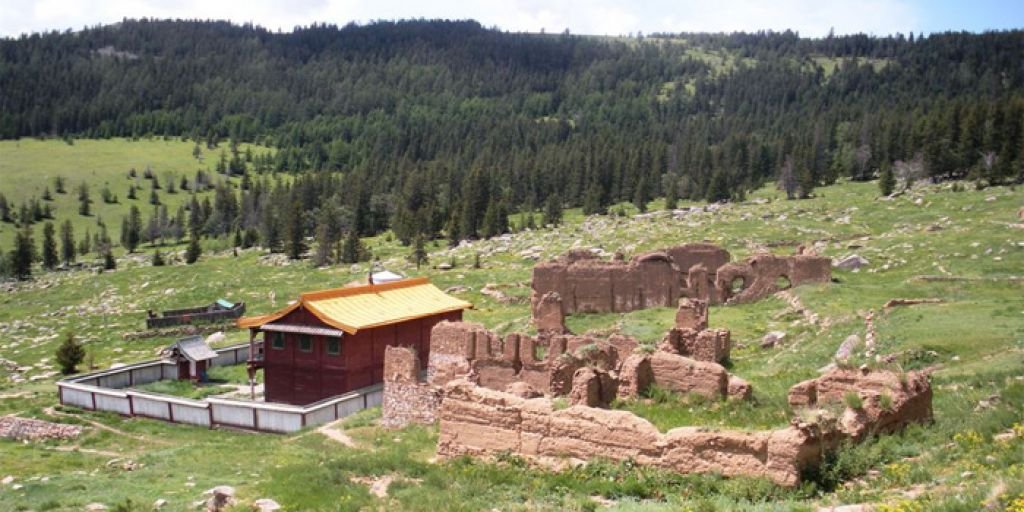
Manzushir Monastery is a historical and spiritual site located about 50 kilometers (31 miles) south of Ulaanbaatar, nestled in the Bogd Khan Mountain range. This beautiful monastery was founded in the 18th century and is named after Manzushir, the Bodhisattva of Wisdom. It was once a major religious center in Mongolia, and its stunning location in the mountains adds to its serene and peaceful atmosphere.
Key Features of Manzushir Monastery:
- Historical Significance:
- Manzushir Monastery was founded in 1733 and was home to hundreds of monks. At its peak, it was one of the largest monasteries in Mongolia and a vital center for Tibetan Buddhism. It was destroyed during the Soviet purges of the 1930s, along with many other Buddhist monasteries in Mongolia, but has been partially restored in recent years.
- Scenic Location:
- The monastery is situated in a picturesque valley surrounded by rugged mountains and lush greenery. The surrounding natural beauty makes it a peaceful place for reflection, meditation, and hiking. The area is a part of Bogd Khan Mountain National Park, which is known for its biodiversity and scenic views.
- Main Temple & Ruins:
- Visitors can explore the ruins of the main temple and other buildings that once stood at the monastery. Some of the statues and carvings have been restored, and you can still see remnants of the original structures. The central stupa is one of the highlights of the site, and it’s a place for contemplation and prayer.
- Museum:
- The monastery complex has a small museum that displays artifacts, religious texts, and other items related to Tibetan Buddhism and Mongolian spiritual traditions. It offers insights into the history and cultural significance of Manzushir Monastery.
- Buddhist Statues and Sacred Sites:
- Visitors can see a number of Buddhist statues and shrines around the monastery, including an impressive stone Buddha carved into a cliff face nearby. The area is dotted with small sacred sites and prayer wheels, offering a chance to connect with the spiritual energy of the place.
- Hiking and Nature:
- The area surrounding the monastery is perfect for hiking and nature walks. The Bogd Khan Mountain is considered sacred, and there are several trails leading through the forested areas, offering views of the monastery and the surrounding landscape.
- Cultural and Spiritual Experience:
- Manzushir Monastery is not just a historical site, but also an active center of spirituality. While the monastery itself may no longer be a functioning religious center to the extent it once was, it still attracts visitors seeking peace, spiritual enrichment, and a deeper understanding of Buddhism.
Top Activities:
- Exploring the Monastery and Ruins: Take a walk around the monastery to explore the remains of its grand structures and learn about its history.
- Photography: The scenic backdrop of the mountains and the monastery ruins offer plenty of photo opportunities.
- Meditation and Reflection: The tranquil setting makes it an ideal place for meditation or simply enjoying the calm atmosphere.
- Hiking: The surrounding nature trails are perfect for those who want to immerse themselves in the natural beauty of the area.
- Visiting the Museum: Learn about the rich cultural heritage and Buddhist practices of Mongolia at the monastery’s small museum.
Best Time to Visit:
The best time to visit Manzushir Monastery is during the summer months (June to September), when the weather is mild and the area is lush and green. The autumn months (October) can also be beautiful, with the changing colors of the leaves. Winter can be harsh, with cold temperatures and snow, making it less ideal for outdoor activities.
Manzushir Monastery is an excellent destination for those interested in Mongolian history, culture, and Buddhism, offering a serene experience amid spectacular natural surroundings.
5. Gun-Galuut Nature Reserve
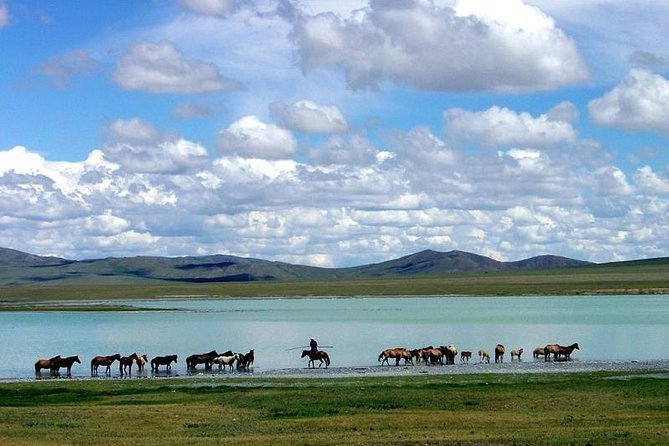
Gun-Galuut Nature Reserve is a protected area located in the central-eastern part of Mongolia, approximately 100 kilometers (62 miles) east of Ulaanbaatar. Spanning over 500,000 hectares, the reserve is one of Mongolia’s most significant natural areas, known for its diverse ecosystems, unique wildlife, and stunning landscapes. The name "Gun-Galuut" comes from the region’s combination of "gun", meaning "steppe," and "galuut", meaning "valley."
Key Features of Gun-Galuut Nature Reserve:
- Biodiversity and Wildlife:
- Wildlife Watching: Gun-Galuut is home to a wide range of wildlife, including Mongolian gazelles, wolves, wild boars, red deer, and snow leopards (though sightings are rare due to their elusive nature). The reserve also has over 200 species of birds, making it a fantastic destination for birdwatching, especially for spotting species like the Saker falcon, Steppe eagle, and whooper swan.
- Wetlands and Lakes:
- Khusvagt Lake: The reserve contains several lakes and wetlands, including Khusvagt Lake, which is an important stopover point for migratory birds. This lake is particularly popular with birdwatchers who come to observe a variety of waterfowl and other species.
- The wetlands provide a unique habitat for wildlife and are crucial for maintaining the balance of the ecosystem.
- The Argali Sheep:
- Gun-Galuut is one of the few places in Mongolia where the Argali sheep, the world’s largest wild sheep species, can be found. These majestic creatures are a symbol of the region’s untouched wilderness and are a highlight for wildlife enthusiasts and photographers.
- Mongolian Nomadic Culture:
- Visitors to the reserve can learn about the traditional nomadic lifestyle of the Mongolian people, as the area is home to several nomadic herders. You can stay in a ger (yurt) and experience authentic Mongolian culture, enjoy traditional food, and even participate in herding activities if interested.
- Outdoor Activities:
- Hiking: The reserve offers numerous hiking trails that allow visitors to explore the unique landscapes of the steppe, valleys, and wetlands. These trails offer scenic views of the surrounding mountains and lakes.
- Horseback Riding: Horseback riding is one of the best ways to explore the vast steppe of Gun-Galuut, providing an immersive experience of Mongolia’s open plains and helping visitors connect with the land in the way that local herders have for centuries.
- Camping:
- For those who enjoy outdoor adventures, camping in the reserve is a popular activity. Spending a night under the stars in this pristine environment, far from city lights, offers a memorable experience. It’s especially enjoyable for those who want to be surrounded by nature.
- Conservation and Ecotourism:
- The reserve is dedicated to preserving its biodiversity and offers a great opportunity to participate in ecotourism. Visitors are encouraged to respect the environment and follow sustainable practices while exploring the area.
- Cultural Sites and Attractions:
- Burkan Khaldun Mountain: Nearby, you can visit Burkan Khaldun Mountain, a sacred site historically associated with Genghis Khan. It’s believed to be the place where the great leader was born and the mountain he climbed before establishing his empire.
- Turtle Rock: A famous natural rock formation resembling a turtle is another popular spot in the area, providing both a unique photo opportunity and a serene place to stop and enjoy the surroundings.
Best Time to Visit:
- The best time to visit Gun-Galuut Nature Reserve is during the summer months (June to September), when the weather is pleasant and wildlife is most active. This is the prime season for birdwatching and outdoor activities. While the winter months (November to March) can offer stunning snowy landscapes, the cold temperatures and harsh conditions may make travel and outdoor activities more challenging.
How to Get There:
- Gun-Galuut is accessible by car from Ulaanbaatar, with the drive taking around 2-3 hours. Many visitors opt to join guided tours that include transportation, meals, and accommodations, particularly if they want to experience the cultural aspects of the reserve along with its natural beauty.
Gun-Galuut Nature Reserve offers an unforgettable experience for nature lovers, wildlife enthusiasts, and those interested in experiencing Mongolia’s rich natural and cultural heritage. Whether it’s exploring its vast steppe, spotting rare wildlife, or immersing oneself in traditional Mongolian life, the reserve is an exceptional destination for adventurers.
Whether you're exploring the vibrant city of Ulaanbaatar or venturing into Mongolia’s stunning natural landscapes, these destinations promise an unforgettable experience.
Ulaanbaatar Itinerary
Day 1: Discovering the Historic and Cultural Heart of Ulaanbaatar
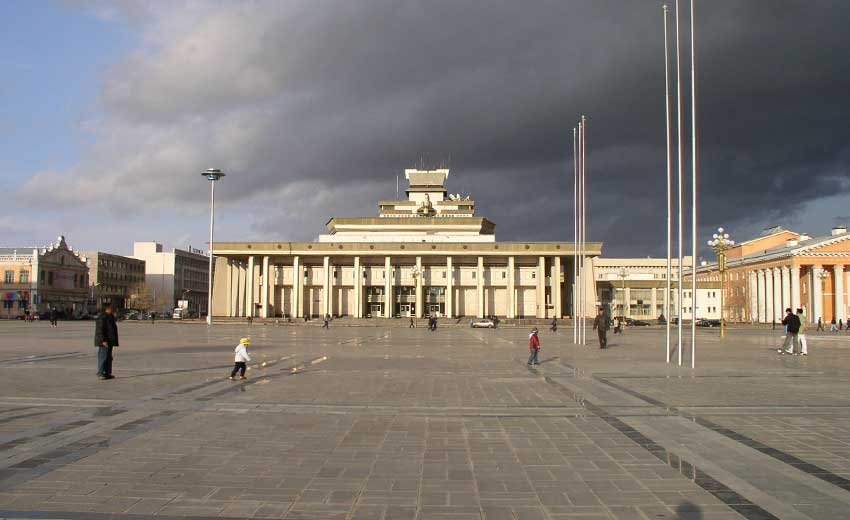
Morning: Gandan Monastery and Sukhbaatar Square
Start your Ulaanbaatar itinerary with a visit to Gandan Monastery, the city’s most important Buddhist site. Officially known as Gandantegchinlen Monastery, this spiritual complex is home to a towering 26-meter statue of Migjid Janraisig (a form of Avalokiteshvara). As you explore, you’ll witness monks chanting and locals making offerings, offering a profound glimpse into Mongolia’s Buddhist heritage.
Next, head to Sukhbaatar Square, the central square of Ulaanbaatar. This vast open space is named after Damdin Sukhbaatar, a revolutionary hero of Mongolia. Here, you’ll see the grand facade of the Mongolian Government Palace, flanked by impressive statues of Genghis Khan and his successors. The square is a fantastic place to take in the city's vibrant energy and observe locals going about their day.
Afternoon: The National Museum of Mongolia and Choijin Lama Temple
For an in-depth look at Mongolia’s rich history, visit the National Museum of Mongolia. The museum covers everything from the prehistoric era to the rise of the Mongol Empire under Genghis Khan. Highlights include ancient artifacts, traditional clothing displays, and exhibits on Mongolia’s Soviet-era past.
Afterward, make your way to the Choijin Lama Temple Museum, an architectural gem showcasing stunning Buddhist artwork and religious artifacts. This former monastery, now a museum, offers an intimate look at Mongolia’s Buddhist traditions before the Soviet suppression of religion in the 20th century.
Evening: Traditional Mongolian Cuisine and Cultural Performance
Wrap up your first day with a traditional Mongolian meal at a renowned restaurant like Modern Nomads or Khuushuur Hut. Savor dishes like buuz (steamed dumplings), khuushuur (fried meat pastries), and hearty Mongolian barbecue.
For a cultural treat, attend a Mongolian folk performance at the National Academic Drama Theatre. You’ll witness throat singing, contortionists, and a mesmerizing display of the morin khuur (horsehead fiddle), providing a perfect end to your first day.
Day 2: Exploring Ulaanbaatar’s Nature and Soviet Heritage
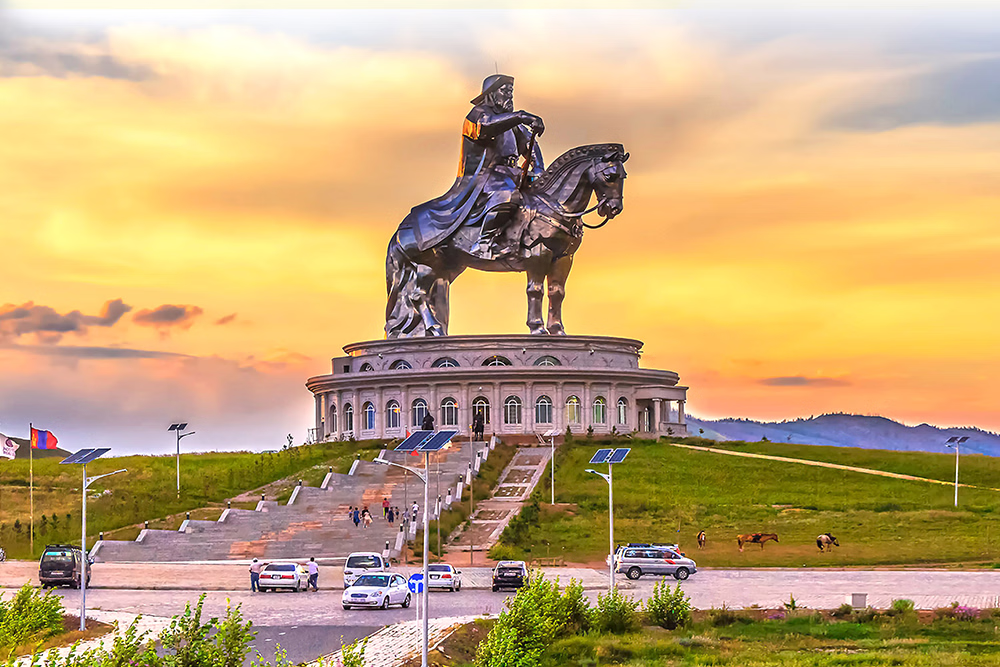
Morning: Zaisan Memorial and Bogd Khan Palace Museum
Begin your second day by hiking up to the Zaisan Memorial, a Soviet-era monument offering panoramic views of Ulaanbaatar. Built to honor Soviet-Mongolian friendship, the monument’s murals depict scenes from World War II and socialist cooperation. The climb is worth it for the breathtaking sunrise or early morning views of the city.
Next, visit the Bogd Khan Palace Museum, the former winter residence of Mongolia’s last king, Bogd Khan. The museum showcases the lifestyle of Mongolia’s aristocracy, featuring intricate Buddhist relics, personal belongings of the king and queen, and beautifully preserved temple structures.
Afternoon: The Mongolian Nomadic Experience and Naran Tuul Market
For a hands-on experience of nomadic culture, head to Mongolia Nomadic, a cultural center where you can learn about traditional ger (yurt) living, Mongolian herding techniques, and try activities like archery and horseback riding.
If you’re up for some shopping, visit Naran Tuul Market, also known as the “Black Market.” This sprawling bazaar is the best place to buy Mongolian cashmere, traditional deels (Mongolian robes), handmade crafts, and even horse-riding gear. Be sure to bargain for the best prices!
Evening: Fine Dining and Nightlife in Ulaanbaatar
For dinner, try one of Ulaanbaatar’s fine-dining restaurants like Terrazza Lounge or The Bull for a fusion of Mongolian and international cuisine.
If you’re in the mood for nightlife, Ulaanbaatar has a growing bar and club scene. Check out Grand Khaan Irish Pub for a lively atmosphere or Chinggis Club for a more upscale experience.
Day 3: A Day Trip to Terelj National Park and Genghis Khan Statue Complex
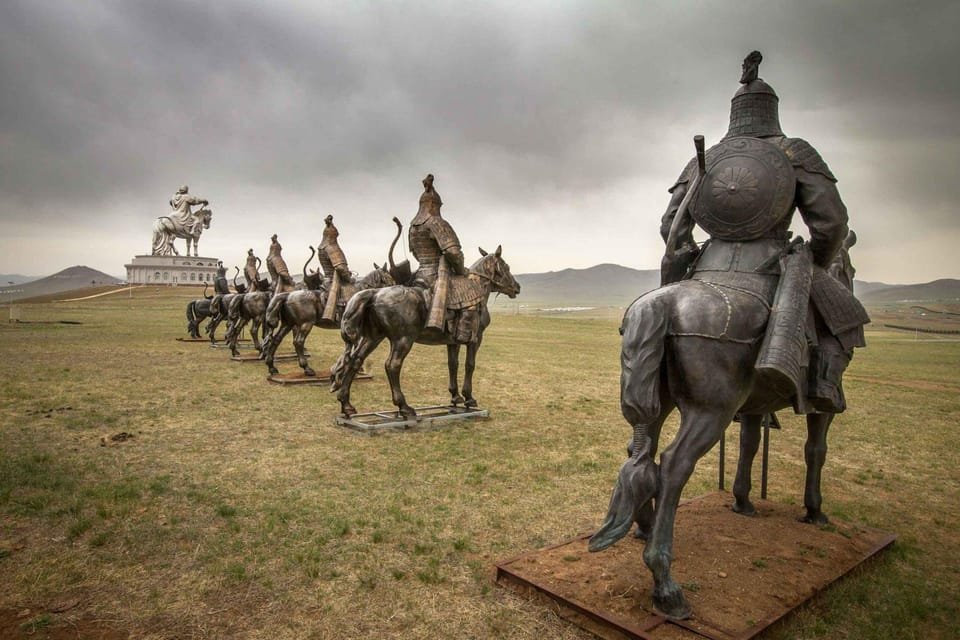
Morning: Journey to Terelj National Park
Dedicate your third day to exploring Terelj National Park, located just 55 km from Ulaanbaatar. This breathtaking nature reserve is famous for its stunning rock formations, lush valleys, and scenic hiking trails.
Afternoon: Genghis Khan Equestrian Statue
No Ulaanbaatar itinerary is complete without a visit to the Genghis Khan Statue Complex. This massive 40-meter silver statue of Genghis Khan on horseback is the world’s largest equestrian statue. Visitors can take an elevator to the horse’s head for a panoramic view of the Mongolian countryside.
Evening: Return to Ulaanbaatar and Relax
After a day in nature, return to Ulaanbaatar and unwind at Tumen Ekh Ensemble, where you can enjoy another traditional Mongolian performance before concluding your journey.
Conclusion
An Ulaanbaatar itinerary is the perfect way to explore the diverse offerings of Mongolia’s capital. From its deep-rooted Buddhist traditions and fascinating history to its lively modern scene and breathtaking nature, Ulaanbaatar is a city full of surprises. Whether you spend a few days or a week, this itinerary ensures you experience the very best of Ulaanbaatar, making your Mongolian adventure truly unforgettable.
If you have any questions, leave a comment below or send me a message!
